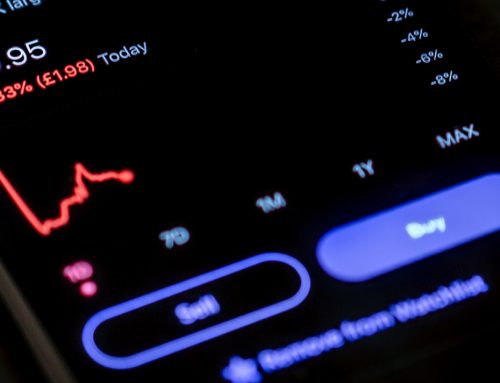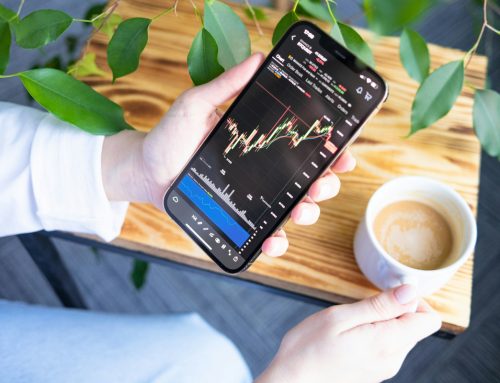The goal with selling covered calls is to pocket premium income without having to actually sell your shares with the options contract expiring worthless. When done correctly, this can be a consistent way to generate profits without exposing yourself to much risk.
However, the buyer of your contract may choose to exercise their right to purchase your shares at a discount if the stock price climbs above the strike price. This is known as covered call assignment and something you need to be prepared for as an investor.
So when do covered calls get assigned, and what does it mean for you? More importantly, what can you do to reduce the risk of assignment so you can keep your shares?
We’ll cover all this and more below. The best way to protect yourself from assignment is by stacking the deck in your favor from the start when you actually write the contract.
VectorVest’s stock software paired with the OptionsPro integration helps you pick the best stocks to sell covered calls and set up the strike price and expiration date in your favor. Find out firsthand what a difference it can make as you seek to make money trading options today!
What is Covered Call Assignment?
Let’s start with the basics – what is a covered call? This options strategy involves holding a long position in a stock and selling (writing) call options on that same stock.
The goal is to generate additional income through the premium received from selling the call options. The trade-off is that you cap your potential upside since you’re obligated to sell the stock at the strike price if the call option is exercised by the buyer.
This is known as assignment. It can happen at any time before the option’s expiration if the option is in-the-money, meaning the stock’s market price is above the strike price.
This is why covered calls are bad in some cases. You can get stuck selling a position you intended to hold long-term, which can get in the way of building a stock portfolio for the long haul.
But perhaps more importantly, covered call assignment causes you to miss out on additional gains above the strike price. The opportunity cost is the biggest issue with this strategy.
Say you purchased a stock at $50/share and wrote a contract with a strike price of $55. If the stock then rises to $60/share before expiration, you only earn a profit of $5/share rather than $10/share since you’re forced to sell at the strike price.
So while you still come out on top and earn a profit of $500 ($5/share x 100 shares) PLUS the premium earned from writing the contract (perhaps another $200), the opportunity cost of assignment can be difficult to stomach.
When Do Covered Calls Get Assigned?
Now, when do covered calls get assigned? Can covered calls be assigned before expiration? Do covered calls get assigned early? You’ve got questions, we’ve got answers. Let’s get into all the different scenarios involving covered call assignment.
At-the-Money and In-the-Money Options
Covered calls are most likely to be assigned when the options are either at-the-money (ATM) or in-the-money (ITM). An option is at-the-money when the stock price is equal to the strike price, and in-the-money when the stock price is higher than the strike price.
This is really the only scenario in which the buyer of the call option has an incentive to exercise stock options to purchase the stock at the lower strike price, especially as the option nears expiration. They still need the capital to actually purchase the stock, though.
The likelihood of assignment increases as the option moves further in-the-money because the buyer can immediately profit from buying the stock at a lower price and selling it at the current market value.
Can Covered Calls Be Assigned Before Expiration?
This is one of the most common questions we see asked – and the answer is yes. While it’s less common, early assignment can happen in two different scenarios:
- When the option is deep in-the-money, meaning the stock price is significantly higher than the strike price.
- When the call option is close to expiration, and the option holder wants to capture a dividend.
Let’s say the stock is about to pay a dividend, and the call option is in-the-money. The option holder might exercise the call early to own the stock and receive the dividend.
However, most assignments occur near or at expiration because that is when the time value of the option has eroded, leaving mostly intrinsic value.
Expiration Day Assignments
The option will typically be exercised on expiration day if the stock price remains above the strike price. The call writer will then be assigned, meaning you’ll have to sell your shares at the strike price.
But what happens when options expire and the stock price remains below the strike price? Nothing – the contract will likely expire worthless, you’ll pocket the premium as profit, and you can run it back again with a new covered call contract!
Factors Influencing Assignment Probability
We’ll talk about how to reduce the likelihood of having your call assigned in just a moment – but understanding the moving pieces that affect assignment is essential. These are the factors you need to be aware of:
- Intrinsic Value: Options with significant intrinsic value (the stock price is well above the strike price) are more likely to be exercised.
- Time to Expiration: The likelihood of assignment increases for in-the-money options as expiration approaches.
- Dividends: If a stock is about to pay a dividend, the likelihood of early assignment increases because the option holder may want to own the stock to receive the dividend.
Reducing the Likelihood of Covered Call Assignment
You don’t want to have your shares called away from you, but you need to make sure you’re earning enough premium from writing these calls that the strategy is actually worth it. There’s a balance to be struck – here’s what you need to know.
Choosing the Right Strike Price
You can see how the strike price in options affects your risk of assignment. The closer it is to the current stock price the greater likelihood the contract could end up in or at-the-money.
Look into key resistance levels when choosing your strike price. Remember that setting the strike price much higher may reduce your chances of being assigned, but it will also reduce the premium you could earn.
Picking the Optimal Expiration Date
Similarly, the expiration date influences 1) how much premium you can earn and 2) how likely it is your contract will end up in or at-the-money.
Shorter-term options generally carry less risk of assignment because there is less time for the stock price to rise above the strike price. However, these options earn lower premiums since their less attractive from the buyer’s perspective.
On the other hand, longer-term options (LEAPS) can provide higher premiums but come with an increased risk of assignment as there’s more time for the stock price to reach or exceed the strike price.
Just like with the strike price, you’ll need to align the expiration date with your market outlook and risk tolerance.
Writing Calls on the Ideal Stocks
Knowing how to pick stocks for options trading is essential for tipping the scale in your favor when writing covered calls for income. Just like with strike price and expiration date, there’s a balance to be struck here.
Stocks with lower volatility tend to have more predictable price movements, reducing the likelihood of sudden spikes that could push the stock price above the strike price. However, you need some level of volatility, or you’ll have a hard time finding a willing buyer for the contract.
Make sure you’re choosing stocks that you actually want to hold long-term, too.
You can rely on the best stock indicators to find stocks that align with this strategy, and we have tips on how to do technical analysis of stocks or how to combine technical and fundamental analysis for the best of both worlds.
But why work harder when you could work smarter with the VectorVest stock advisory? It’s the best app for stock analysis because it takes complex indicators and data and transforms them into clear, actionable insights, saving you time and stress while empowering you to win more trades.
You can pull up a list of the top stocks on any given day with pre-curated screeners too, whether you’re looking for undervalued stocks, aggressive growth stocks, or the best blue chip dividend stocks. See the best stock picker in action with a free stock analysis.
Rolling Covered Calls
There is a way to get out of assignment if you fear it’s coming – rolling a covered call. This involves closing an existing position and opening a new one, either with a different strike price, expiration date, or both.
This options risk management strategy can be used to avoid assignment if the stock price is approaching the strike price. It will come at a cost, but you can defer assignment and potentially capture additional premium income by rolling the call to a higher strike price or a later expiration date.
Avoiding Ex-Dividend Dates
When writing covered calls for the high dividend stocks you need to be extra careful about scheduling your expiration dates around the ex-dividend date. This is the date by which one must be a shareholder of record to receive the dividend payout.
Call options are more likely to be exercised early when a stock is about to go ex-dividend because option holders may want to capture the dividend. So, avoid writing calls that expire around the ex-dividend date.
You could also avoid writing calls on safe dividend stocks altogether, but the benefits of these stocks are profound, and we recommend them as part of any stock investment strategy.
Final Thoughts on When Covered Calls Are Assigned
So, when do covered calls get assigned? We hope this guide to covered call assignment has left you with a solid grasp of this concept and how you can stack the contract in your favor to avoid it while still earning enough premium.
You can learn options trading more in our blog. We have resources on how to sell options such as open interest in options, stock options benefits, warrants vs options, trading futures vs options, IV in options trading, call vs put, covered call ETFs, long calls vs covered calls, taxes on covered calls, and more.
Trading stock options for beginners is hard enough as it is, though. So, why not make it easier with the best iPhone stock apps or best Android stock apps? VectorVest gives you the tools you need to navigate options trading with clarity and confidence. Learn more today!







Leave A Comment